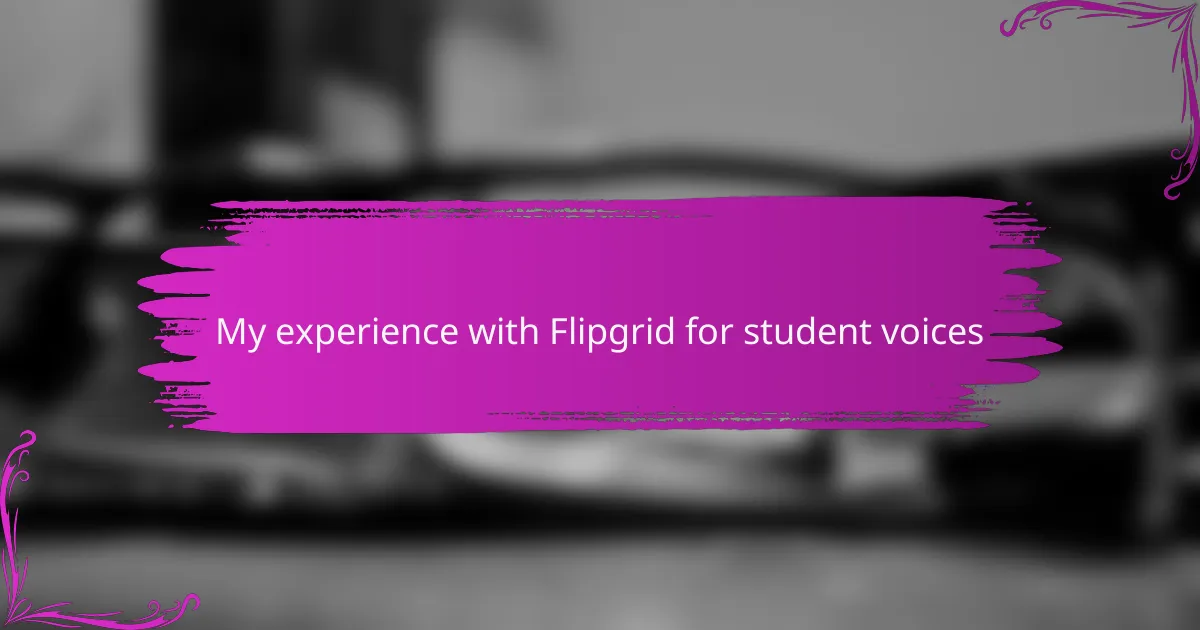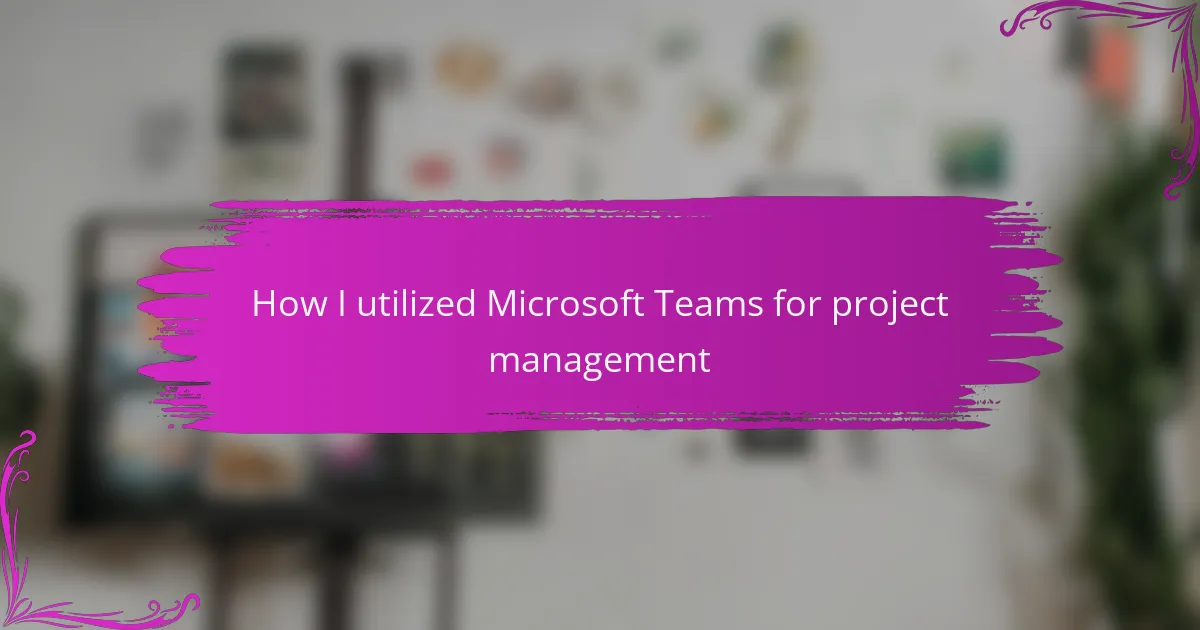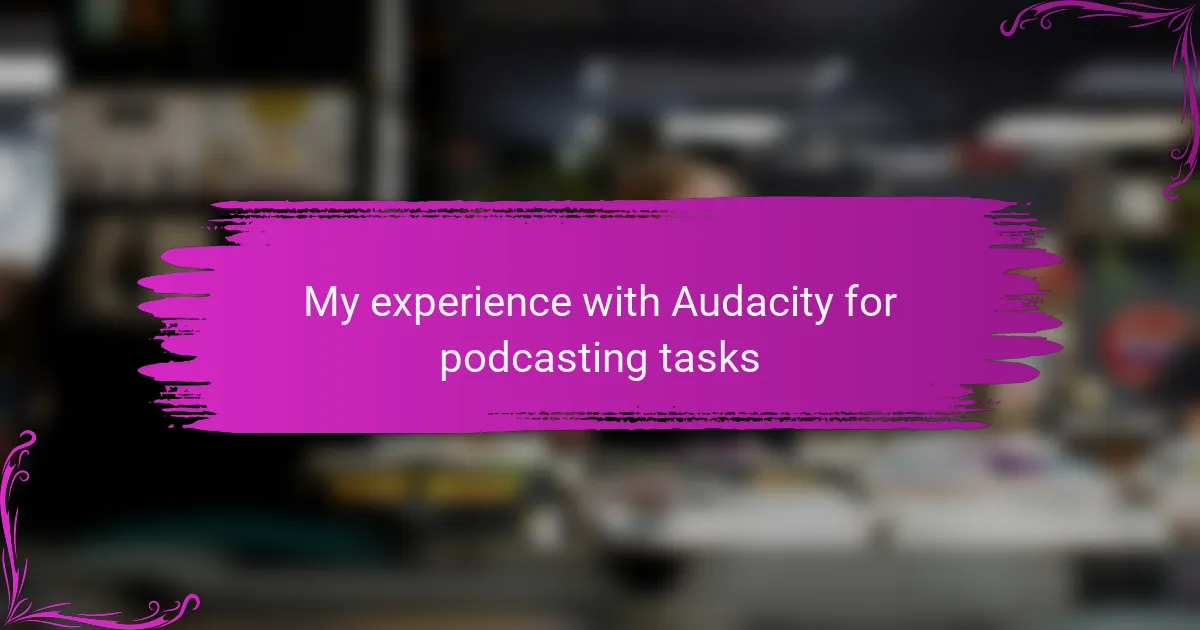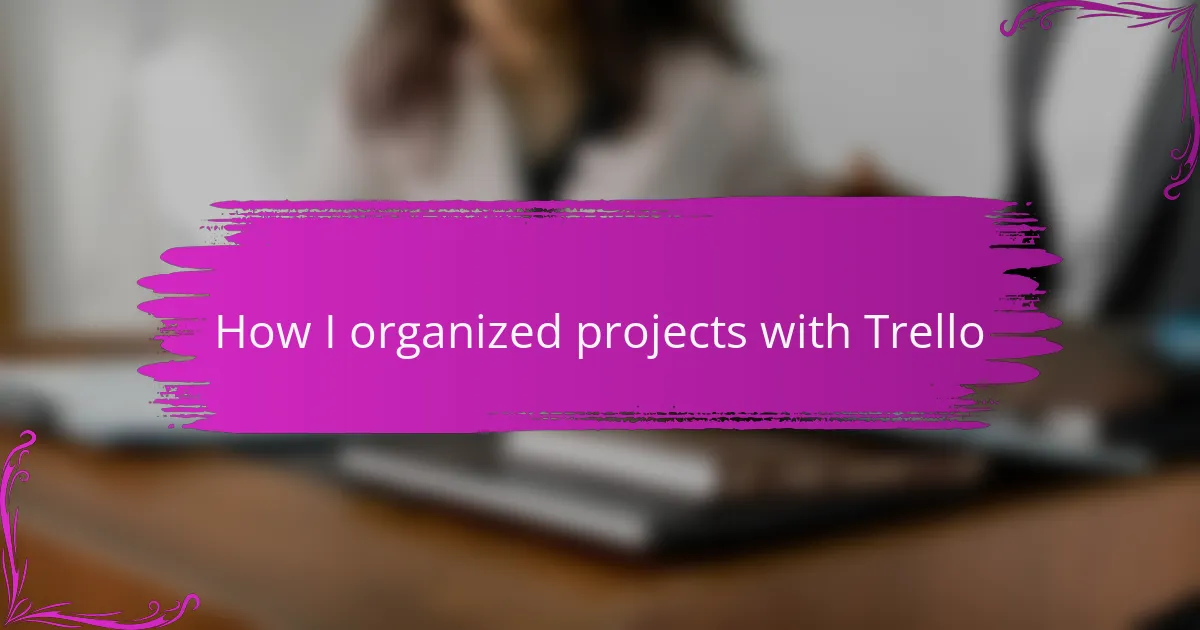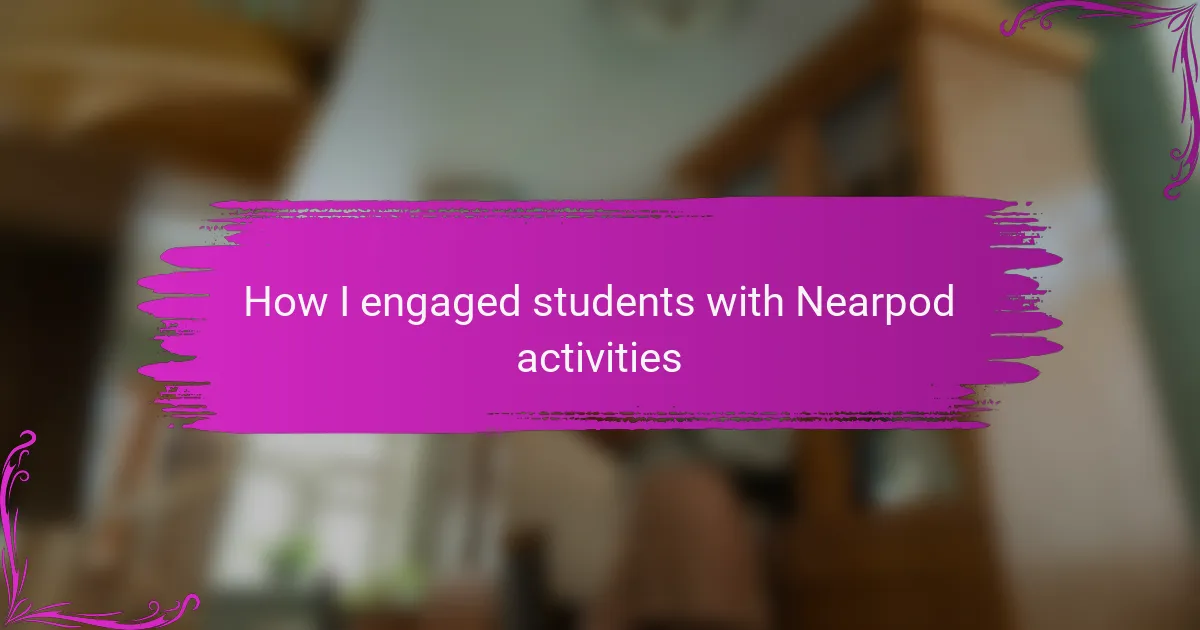Key takeaways
- Literature education resources, such as Flipgrid and book clubs, enhance student engagement and deepen understanding of texts.
- Student voices are crucial for personal connection and inclusivity, fostering respect and empathy in discussions.
- Flipgrid transforms learning by allowing students to share insights through video, boosting confidence and encouraging peer collaboration.
- Effective strategies for using Flipgrid include creating engaging prompts, encouraging peer responses, and fostering a supportive community.
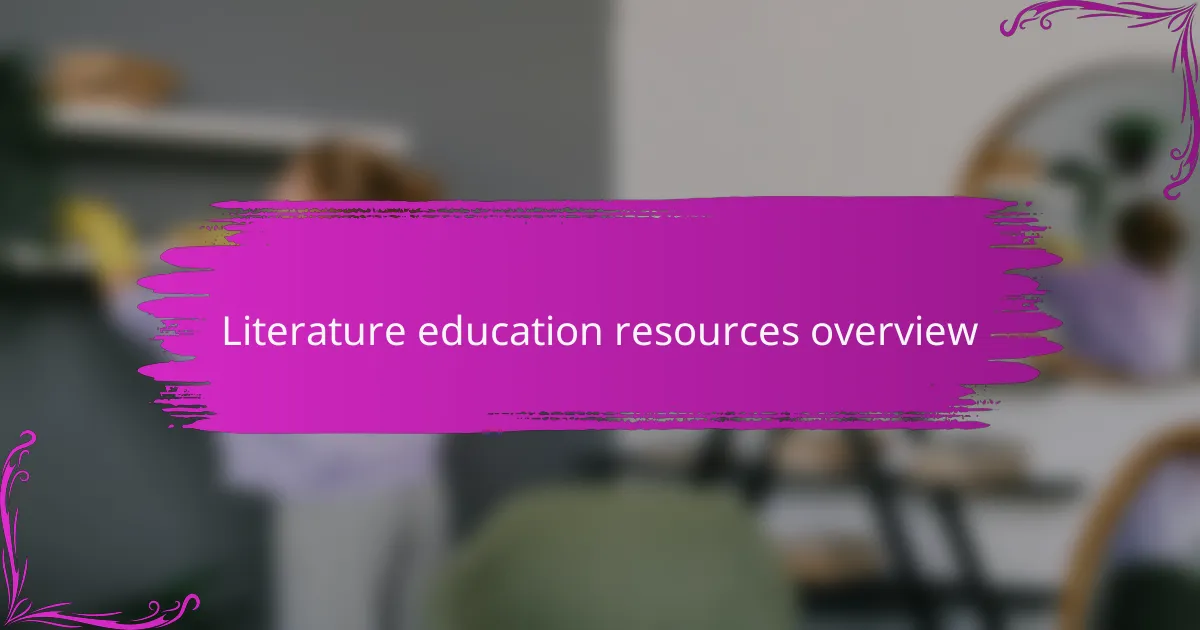
Literature education resources overview
Literature education resources play a crucial role in enhancing students’ engagement and understanding of texts. I’ve seen firsthand how tools like Flipgrid can amplify student voices, allowing them to express their thoughts and perspectives on literature with authenticity and creativity. It’s exciting to witness students sharing their insights, and I often find their interpretations surprise and inspire me.
Using a variety of literature education resources can greatly enrich the learning experience. Here’s a short list of some key resources that I believe can make a significant impact:
- Flipgrid: A video discussion platform fostering student collaboration and personal expression.
- Book Clubs: Encouraging group discussions can deepen comprehension and appreciation of texts.
- Interactive Apps: Tools like Nearpod help create engaging literature lessons that promote active participation.
- Online Literary Databases: These resources provide access to a wealth of texts and critical analysis.
- Creative Projects: Assignments like book trailers or visual metaphors tap into students’ creativity and personal connections to the literature.
In my experience, integrating these resources not only motivates learners but also helps them form a deeper emotional connection to what they read.
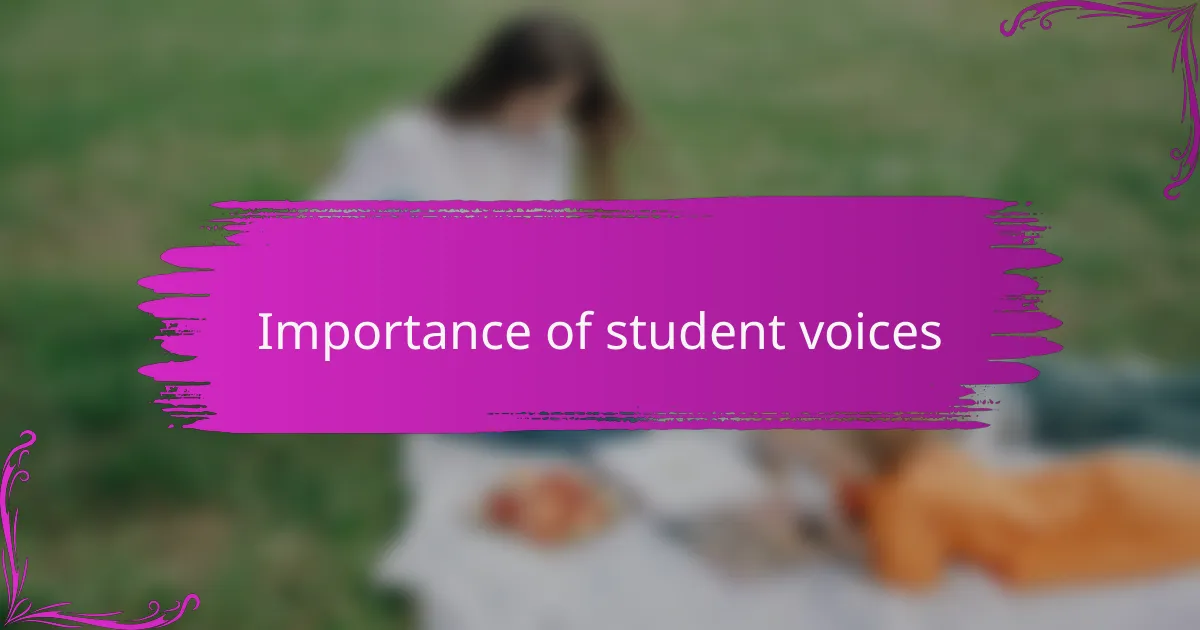
Importance of student voices
When students share their voices, they bring their unique experiences and perspectives into the conversation. I remember a time when a quiet student opened up on Flipgrid, sharing how a character’s struggle mirrored their own challenges. It was a powerful moment that transformed how the class viewed both the text and each other. How often do we overlook the depth of understanding that comes from letting students connect literature to their lives?
The importance of student voices cannot be overstated. When I encourage students to express themselves, I see their confidence grow. Engaging in discussions allows them to think critically and articulate their thoughts, something I’ve noticed significantly impacts their overall learning. It’s like unlocking a door to new insights, both for them and for their peers.
Additionally, embracing student voices promotes inclusivity. In my experience, diverse perspectives lead to richer conversations and a deeper appreciation for literature. Watching students share different viewpoints reminds me that every voice adds value and encourages a culture of respect and empathy in the classroom. Isn’t that what education should truly aim for?
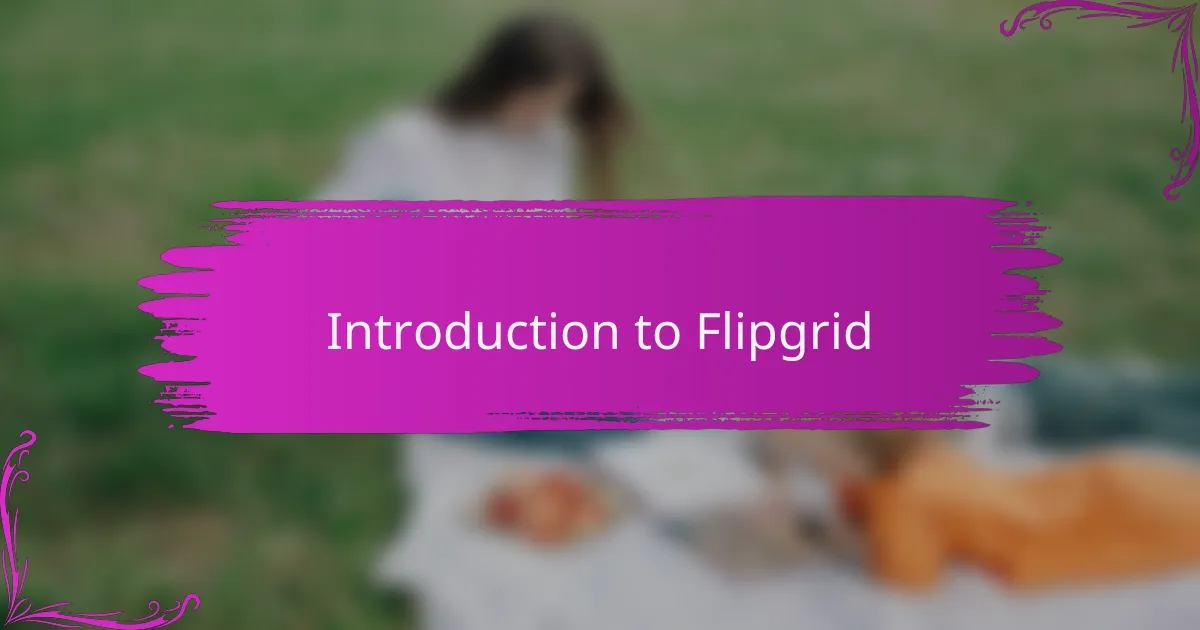
Introduction to Flipgrid
Flipgrid is an innovative platform that empowers students to share their voices in a dynamic way. In my experience, it transforms traditional learning by allowing students to express their thoughts through video responses. I remember the first time I used it in my classroom; I was amazed at how students who typically shied away from speaking up became enthusiastic contributors.
Here are some key features of Flipgrid that stand out to me:
- User-friendly interface: Students of all ages can navigate the platform easily.
- Video responses: Allows for personal storytelling and sharing insights in a creative format.
- Community engagement: It fosters a sense of belonging by connecting students with peers from diverse backgrounds.
- Feedback and support: Teachers can provide timely responses, which encourages improvement and builds confidence.
- Inclusivity: It accommodates different learning styles, making every student feel valued.
Through these features, I’ve seen students truly come alive, eager to share their perspectives.
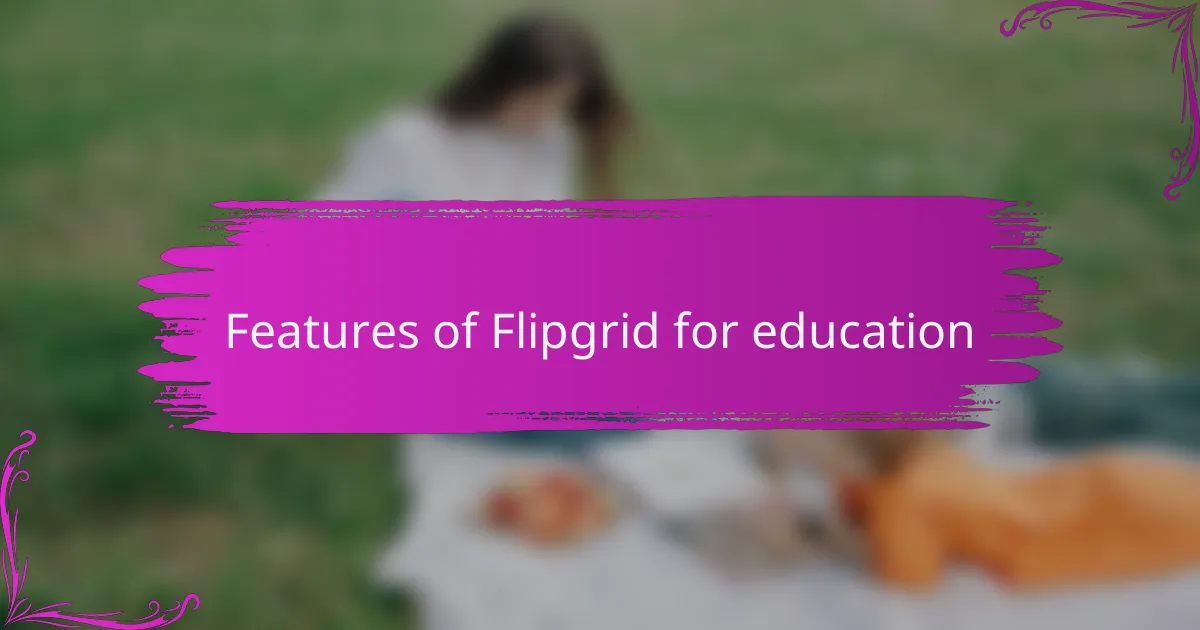
Features of Flipgrid for education
One of the standout features of Flipgrid for education is its user-friendly interface. I’ve observed that even students who are less tech-savvy quickly become comfortable navigating the platform. It’s gratifying to see them embrace technology in a way that enhances their learning and creativity. Have you ever seen a reluctant learner light up when given the right tools? That’s the magic of Flipgrid.
Another feature that particularly resonates with me is the ability for students to record video responses. This allows them to share their thoughts and experiences in a way that feels authentic. I recall a student who shared a deeply personal reflection about a character’s journey, and it struck a chord with everyone in the class. It’s moments like these that show how powerful self-expression can be when given the right medium.
Finally, I appreciate how Flipgrid encourages community engagement. Students can interact not just with their classmates, but also connect with peers from other schools. I remember hosting a collaborative grid where students exchanged thoughts on a shared book. The excitement in their voices was palpable, and it opened up a whole new level of understanding and empathy. Isn’t it incredible how technology can create these enriching experiences?
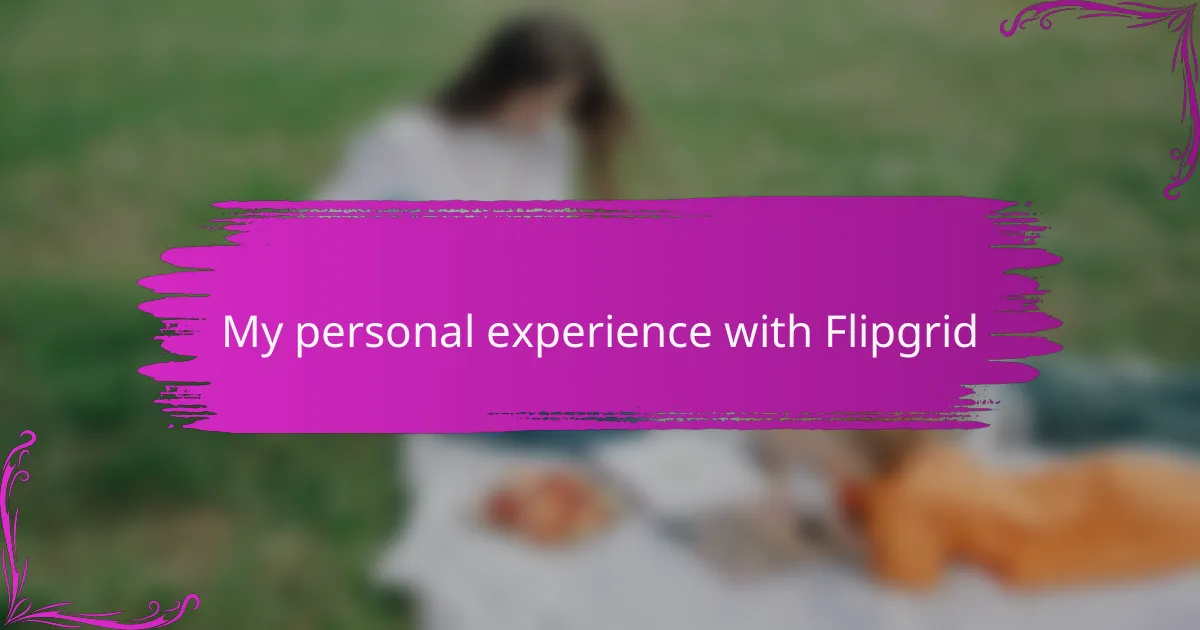
My personal experience with Flipgrid
My exploration with Flipgrid has been quite transformative. When I first introduced it into my classroom, I was amazed by how eager my students were to share their thoughts. I distinctly remember a shy student who would barely raise her hand during discussions. Yet, when she recorded her Flipgrid video, her enthusiasm and clarity shone through. It was as if a weight had been lifted, and I could see her confidence blossom.
Using Flipgrid has fostered a sense of community among my students. They engage not only with my prompts but also with each other’s responses, creating a vibrant dialogue that continues beyond the classroom. I adore watching them support one another in the comments. Here are some highlights from my experience:
- Increased student engagement, especially among quieter students.
- The opportunity for students to express their thoughts in their own space and time.
- Enhanced peer-to-peer learning through commenting and video responses.
- A platform for creative expression, allowing students to utilize their personalities in their presentations.
- Immediate feedback from both peers and educators, promoting a growth mindset.
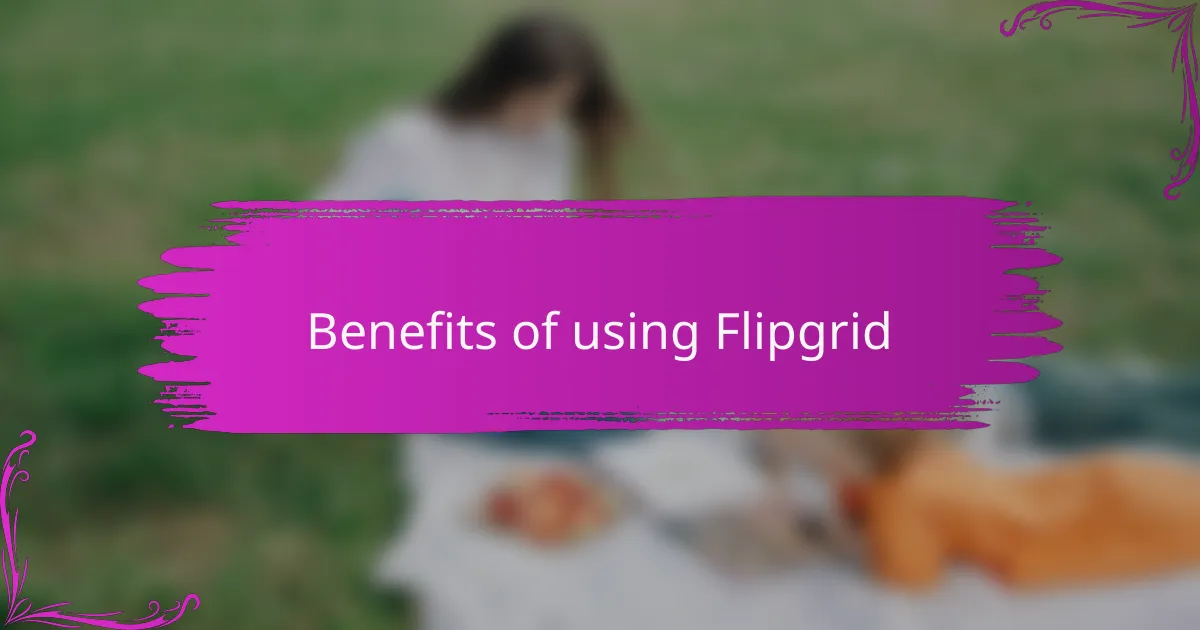
Benefits of using Flipgrid
Using Flipgrid has truly transformed the way I engage with my students. The excitement I see in their faces when they realize they can express their thoughts through video is contagious. It fosters a sense of community and empowers them to share their unique perspectives on literature, making discussions more dynamic and inclusive.
One of the standout benefits I’ve noticed is the way it encourages shy or reluctant students to participate. They can express themselves in an environment that feels safe and friendly, leading to more authentic voices being heard. I’ve seen students collaborate in surprising ways, building confidence along the journey.
Another advantage is the ease of feedback. I can provide personalized responses to each student’s video, which helps me connect with them individually. This immediacy reinforces learning and encourages continuous dialogue, enriching their literature comprehension and critical thinking skills.
| Benefit | Description |
|---|---|
| Enhanced Engagement | Students are excited to share their insights through video, fostering a lively atmosphere. |
| Increased Participation | Shy students find a comfortable platform to express themselves, leading to more diverse viewpoints. |
| Instant Feedback | Teachers can provide quick, personalized responses, enhancing the learning experience. |
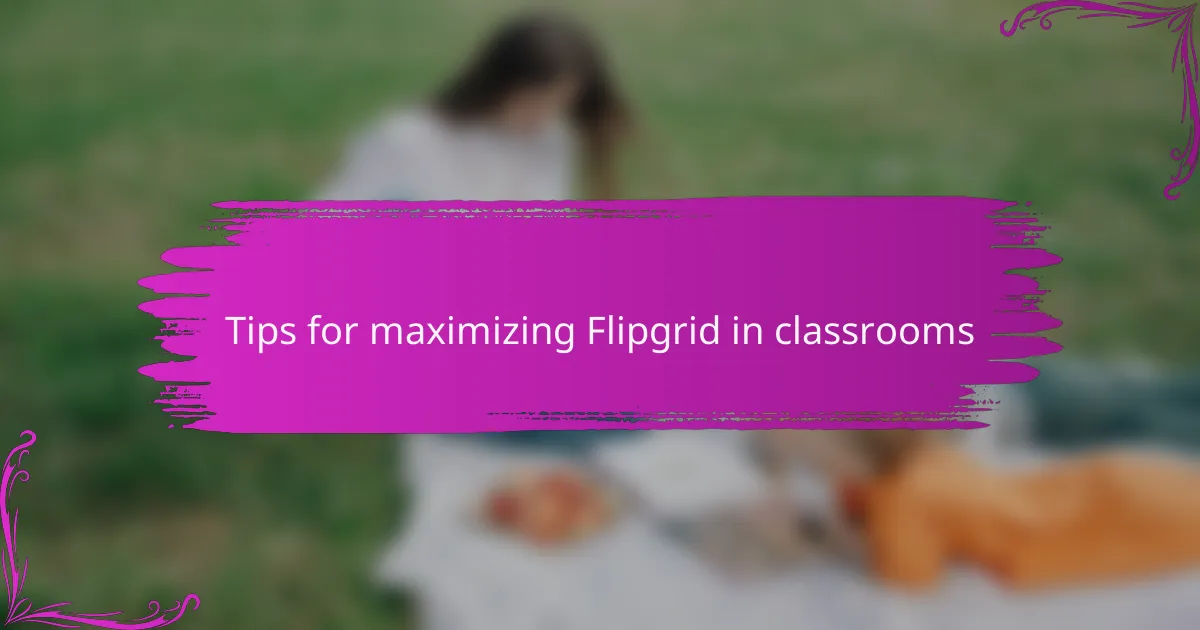
Tips for maximizing Flipgrid in classrooms
When I first started using Flipgrid in my classroom, I was amazed at how it empowered my students to share their voices in ways I had never anticipated. The platform’s ease of use encourages even the most reserved students to engage. I remember one student who had always struggled with traditional presentations; using Flipgrid helped her express her thoughts confidently.
To really maximize the potential of Flipgrid, here are some practical tips:
- Create clear and engaging prompts that resonate with your students’ interests.
- Encourage students to respond to each other’s videos, fostering a supportive classroom community.
- Utilize the features like stickers and text to make videos more interactive and fun.
- Set aside specific times for sharing videos in class, creating excitement and anticipation.
- Reflect on the videos as a class to encourage critical thinking and dialogue about the content.
Integrating these strategies has truly transformed my classroom dynamics and enriched my students’ learning experiences.
